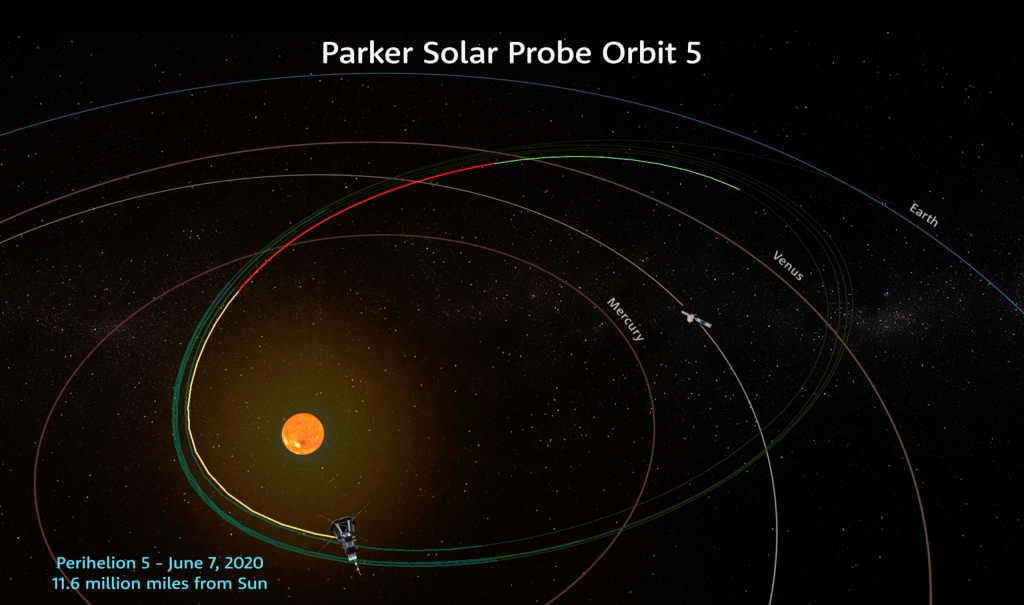On June 9, 2020, NASA’s Parker Solar Probe signaled the success of its fifth close pass by the Sun, called perihelion, with a radio beacon tone. The spacecraft completed the fifth perihelion of its mission two days prior, flying within 11.6 million miles from the Sun’s surface, reaching a top speed of about 244,225 miles per hour, which matches the spacecraft’s own records for closest human-made object to the Sun and fastest human-made object, set during its fourth orbit on January 29.
Mission controllers at the Johns Hopkins Applied Physics Laboratory in Laurel, Maryland, received a “status A” beacon from the spacecraft at 4:40 p.m. EDT. Status A is the best of four possible status signals, and indicates that the spacecraft is operating nominally and the instrument suites are collecting science data. This beacon tone comes after a five-day period where communications with the spacecraft were not possible.
After completing the solar encounter on June 13, Parker Solar Probe will travel toward Venus for its third flyby of the planet — the first Venus flyby that will happen as the spacecraft travels away from the Sun, rather than towards the Sun. Parker Solar Probe will use Venus to shed some of its orbital energy and get much closer to the Sun on the following orbit. Passing at an altitude of approximately 516 miles above Venus’ surface — much lower than the previous two flybys but still well above Venus’ atmosphere — Parker Solar Probe will also witness a brief 11-minute solar eclipse during the maneuver while passing through the shadow of the planet.

This fifth orbit around the Sun includes Parker Solar Probe’s longest observation campaign to date. The spacecraft, which has already completed four progressively closer orbits, activated its instruments at a distance of 62.5 million miles from the Sun’s surface on May 9, some 39 million miles farther from the Sun than a typical solar encounter. The full set of instruments will continue to collect data through June 28, markedly longer than the mission’s standard 11-day encounters.
Data from this fifth observation campaign will be downlinked to Earth between late June and mid-August 2020, and will be released to the public in November 2020.
By Justyna Surowiec
Johns Hopkins University Applied Physics Lab
